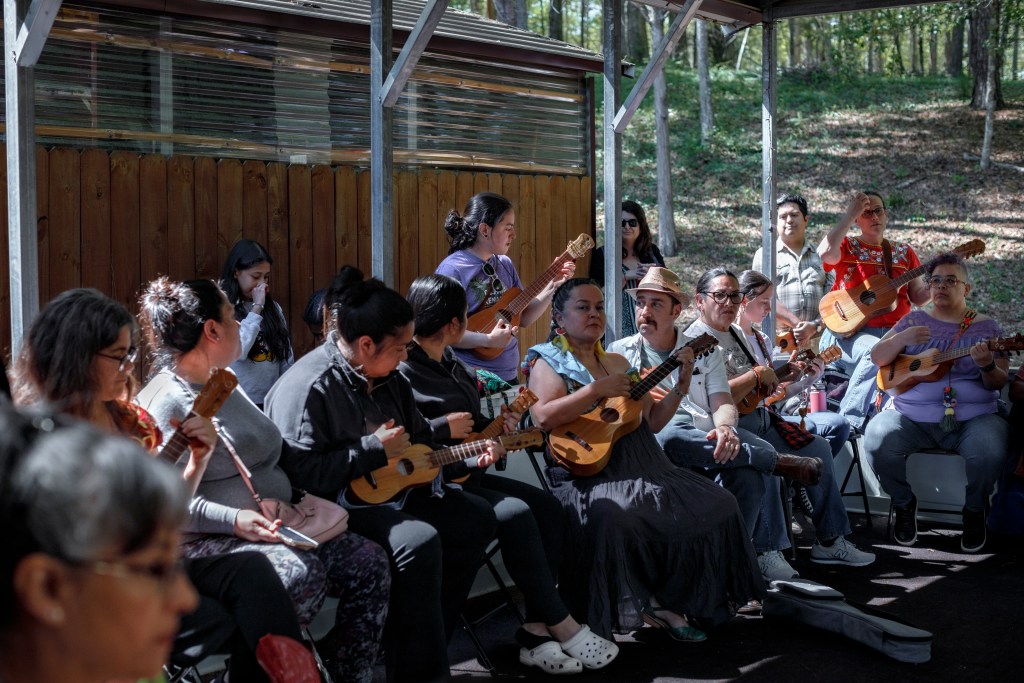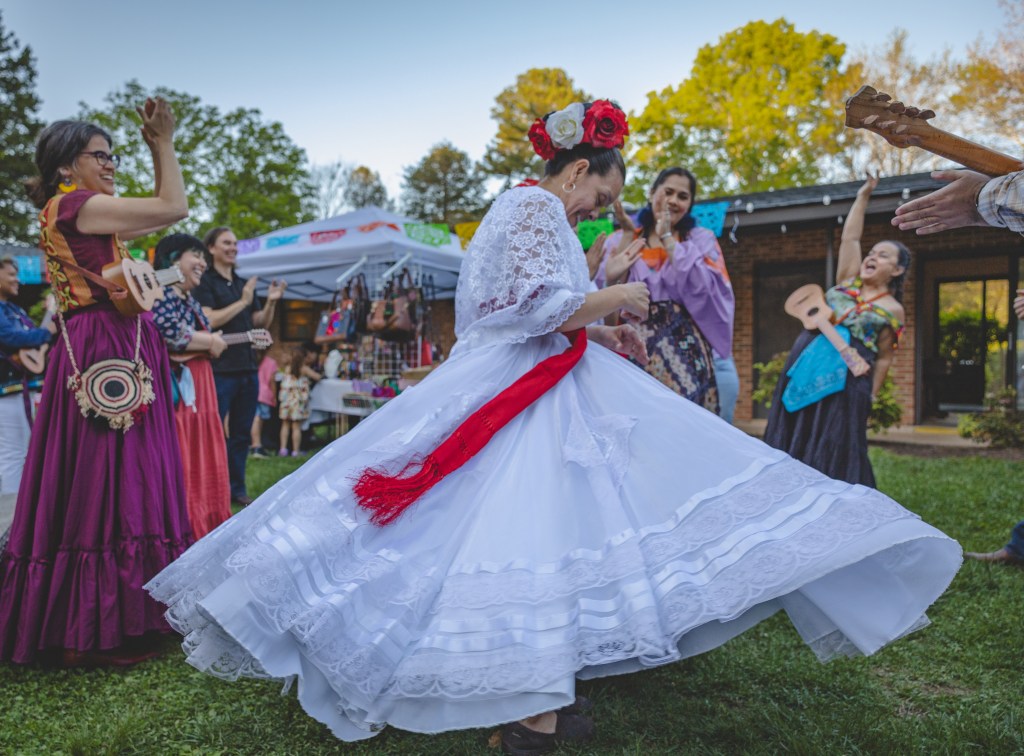Sophia Enriquez vividly remembers the first time she attended a Fandango.
It was 2018, and she was in Veracruz, an eastern Mexican state known for its rich cultural traditions, including Son Jarocho, the region’s folk music that goes back centuries, and Fandangos, the community gatherings that revolve around Son Jarocho music.
“It was like if you’ve never tried pasta and you try it for the first time in Italy, in a restaurant in Rome,” Enriquez, an assistant professor of music and Latina studies at Duke University, says, laughing as she searches for a metaphor.
“I’d never experienced this tradition,” she continues, “and it just so happened that the first time I experienced it was at a Fandango recognized as being very traditional and very representative.”
At the time, she was on a trip, visiting Veracruz, seeking to connect with her Mexican roots. A folk musician, she instantly recognized the format: “‘Oh, this is like an old-time jam. And [there are] so many different, different types of people.”
The experience stuck with Enriquez. A few years later, when she moved to Durham to begin teaching at Duke, she met fellow music-lover Alexandra Landeros and, in a series of events that Enriquez describes as “kismet,” the pair decided to help found Durham’s very own Fandango in 2022.
The event is a bit like a block party, drawing in Son Jarocho collectives from around the country for a packed weekend of food, zapateado dancing, and music, including a Saturday night jam that bleeds into early morning hours. This year’s Fandango, on May 10 at the Avila Center for Community Leadership, marks its third edition. The event has grant funding from the City of Durham and the Durham Arts Council and is free and open to the public.
“It’s very community-oriented,” Dorian Gomez, a storyteller and sound artist, says of Son Jarocho. Alongside Enriquez, she is a member of the local, women-led musical collective Son de Carolina. In the lead-up to the weekend, the group has been holding Son Jarocho workshops.
“It’s definitely one of those things where being in community with other people is a form of resistance—us being able to share this joy with other people and being able to care for one another, through food, through song, through environment, you know, just being able to play till sunrise,” Gomez says.
Resistance isn’t an arbitrarily applied word: Son Jarocho, a fusion of indigenous, Spanish, and African influences, emerged when Mexico was a colony of Spain. Its first documented reference, according to scholars Micaela Díaz-Sánchez and Alexandro D. Hernández in The Journal of Pan African Studies, is a 1799 colonial edict banning a specific Son Jarocho song, “El chuchumbé,” due to the perceived transgressive nature of the song’s lyrics and attendant dancing style. Anyone caught participating was subject to punishment.
Nevertheless, the music survived, as music often does, carrying forward a lyrical tradition rooted in political struggle, nature, and daily life. The genre involves specific stringed instruments from Veracruz, with the jarana, requinto, and quijada as the primary instruments, and is distinctive for its participatory element, with a communal call-and-response structure built in.

In the early 20th century, it was adopted more formally as a national cultural marker by the Mexican government, receiving some international transmission, mid-century, through the Ritchie Valens rock-and-roll adaptation of “La Bamba.”
This year’s Durham de Fandango plays host to a group invited from Acayucan in southern Veracruz. Colectivo Los Altepee also sees the genre as an instrument for preserving history and pushing for social change, writing in their artist bio: “This cultural work, which is also our way of life, is very important amidst organized and systemic violence, paramilitarism, issues of land sovereignty, and the extraction of natural resources that has damaged the social fabric of southern Veracruz.”
For Gomez and Enriquez, Durham’s new Fandango tradition is also significant as a representation of the vibrant communities that Latino populations have worked hard to establish in the South, or the “Nuevo South.”

Over a third of Latin American populations migrating to the U.S. have established homes in the South, a fact underscored by North Carolina’s Hispanic community, which, since the 1990s, has been the fastest growing population demographic in North Carolina. According to Enriquez, the two leading states of Mexican migration to North Carolina are Veracruz and Michoacan.
More than eighty people turned out for the first Fandango de Durham, three years ago, and the event has blossomed in size since. This year, several collectives from around the country—Miami, Texas, New Jersey, and New York, among other places—are in town for the event, with more than ninety people staying over at the Avila Center.
“We have so many vibrant communities here that aren’t ‘emerging’—they’re rooted here,” Enriquez says. “The whole Southern Latino experience has been ignored and erased in the larger narrative of Latinos in the U.S. as a very urban experience, as a very border-centric, California and Texas experience.”
“We also want people to see,” Enriquez continues, “that the South has it going on. And we’ve got people holding it down and doing really amazing things. It’s a great place to build a Latino community, despite some historical narratives and contexts that might suggest otherwise.”
Follow Culture Editor Sarah Edwards on Bluesky or email [email protected].
